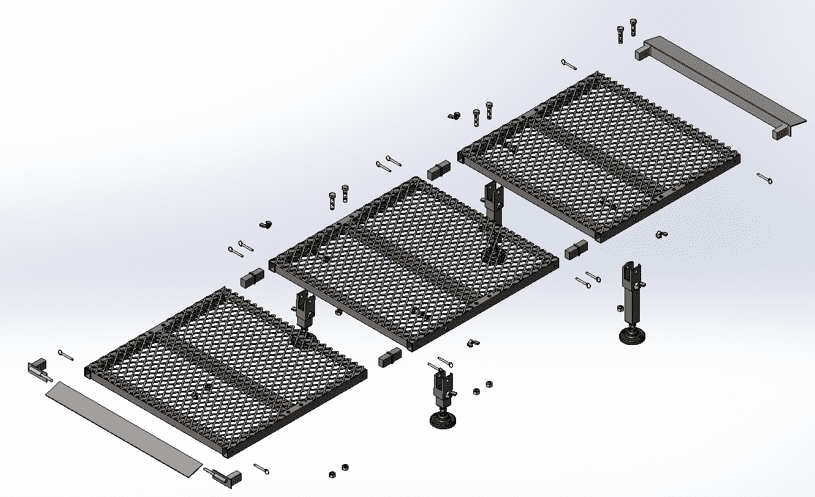| Client |
Adrian Chan and Dr. Edward Lemaire |
| Professor(s) |
Mauricio Ledon, David Lindsay |
| Program |
Electrical Engineering Technology |
| Students |
Josh Brereton | brer0005@algonquinlive.com
Hunter Goudie | goud0060@algonquinlive.com
Kevin Rheault | rhea0043@algonquinlive.com
Thomas Robinson | robi0734@algonquinlive.com |
Project Description:
The WEAR project is being developed for use in the Ottawa Hospital. The project came to life in hopes to improve upon the hospital’s current method of performing EMG tests. The current procedure of performing the test requires an expensive machine which is large, restricted to a small room.The test was also invasive to the patient due to the many interfacing cables and the lengthy setup required to collect the EMG test. The mobile WEAR device has been developed with these problems in mind to create a cheaper and more simple way to perform EMG tests.
The main features of the WEAR device are it’s compact design, positioning system, bluetooth, and ability to write to a micro SD card. The goal of the project was not to finish a completed device, instead the goal of this project was to create a functioning prototype with the features mentioned above.
The team was able to engineer the device’s compact design by implementing the device onto a PCB and programming the system on an Arduino microcontroller. We were able to get the device to a fraction of the size of a standard EMG device. For the device to understand the signals coming in we required a complex analog signal to digital signal converter, for this purpose we picked out a QFP chip called the ADS1298 that is capable of converting 8 channels at a time. We created the device’s positioning system by using an IMU (Inertial Measurement Unit), with this chip we are able to track the real time position of the device in three dimensional space. The device’s bluetooth was completed by using a BLE (Bluetooth Low Energy) nordic chip that is capable of using BLE 5.0 protocol, this gives the device a large transmitting range and a steady signal when a user plots data to a device. Going with a BLE chip we are also able to prolong battery life for our device allowing for longer sessions of testing with a single charge. The microcontroller picked out for this project has an onboard SD slot that allows us to write the incoming signals into this SD card for analysis later. The method of saving data to a micro SD card has been optimized and made more efficient.
Our team has learned so much from doing this project, from technical skills to project management skills. Trying to summarize all of the things we were able to take away from this is incredibly difficult. Most notably the team’s knowledge in PCB design, and software programming has vastly improved. The team learned new techniques to accurately solder a PCB and how to handle very delicate components. Some of the biggest lessons we are taking away from this are, the ability to make critical project decisions, creating and managing a project plan, and sticking to a strict schedule to get work done on time. Our team is very proud of our work on this project and we are confident in the skills that we could develop working on this project.
Short Description:
The goal of the WEAR project is to develop a wearable device that measures tiny voltages from the contraction of muscles. This device can be used in the diagnosis and rehabilitation of degenerative diseases and traumatic injuries.
Contact the Team
Gallery





































